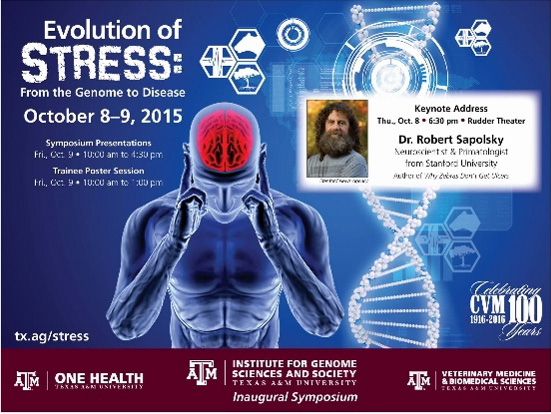Evolution of Stress: From the Genome to Disease Symposium
The Texas A&M Institute for Genome Sciences and Society will hold its inaugural symposium, “Evolution of Stress: From the Genome to Disease,” Oct. 8–9, 2015.
The “fight-or-flight” response—the reaction to real or perceived threats—no doubt saved many of our ancestors from harm. This instinct, seen in humans and animals, evolved to deal with the stress arising from dangerous situations, such as being chased by a lion. However, when this increased level of stress continues for an extended period of time—as it often does in modern culture—it can lead to long-term damage to the body in the form of disease and chronic disorders.
Current research is unraveling the biological and genetic origins of the stress response with the goal of reducing its negative impact while still maintaining its evolutionary benefits. The symposium will explore current knowledge of stress research, and how it can be reduced to alleviate its negative impact on human, animal, and plant health.
A keynote address by world-renowned neuroscientist and primatologist, Dr. Robert Sapolsky of Stanford University, will be held on Thu., Oct. 8, at 6:30 pm at Rudder Theater. The event is free and open to the general public. A reception and book signing will follow the lecture. Sapolsky is the author of Why Zebras Don’t Get Ulcers. He was also featured in Stress: Portrait of a Killer, a National Geographic documentary.
On Fri., Oct. 9, researchers from Texas A&M and around the world will give presentations about the effects of chronic stress on humans, animals, and plants. A trainee poster session will also be held in conjunction with the symposium. All interested faculty, staff, and students are encouraged to attend.
The symposium is co-sponsored by the Texas A&M Institute for Genome Sciences and Society (TIGSS), Texas A&M One Health Initiative and the Texas A&M College of Veterinary Medicine& Biomedical Sciences.

